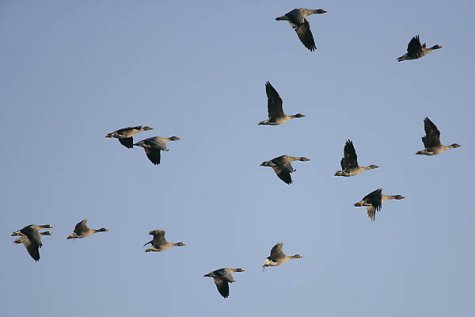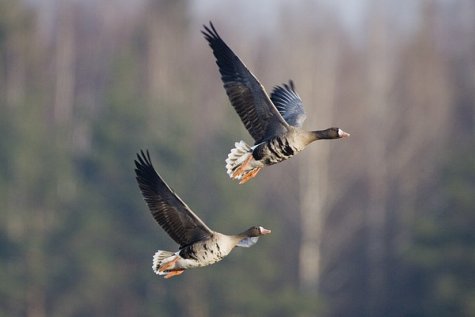Greater white-fronted geese in mixed flocks too
Photos: Arne Ader
Translation: Liis
Bean geese and greater white-fronted geese
Greater white-fronted goose Suur-laukhani Anser albifrons
On autumn migration the greater white-fronted goose flocks as a rule don’t stop in Estonia. The passing migrants are around a couple of hundred thousand birds and on a beautiful autumn day the migration may seem endless. Their melodic ”song” on flying past sounds like „kaga-kligi-kaga-kligi…“ , clearly different from the trumpeting sounds and nasal calls of the bean geese with whom they travel in mixed flocks (see in Arne’s hide-and-seek photo).
As a species characteristic we see on the beak base a white patch visible from far off; on adult birds it extends to the forehead. On the breast plumage the greater white-fronted geese have well visible cross bands (see Arne’s lower photo); on this summer’s birds they develop only at the summer moulting next year. The adults’ beak is pink-coloured, with a tip as if worn white. The beak colour of juvenile birds seems all grey seen from a distance. The weight stays at 2-3 kilos, length on average 70 centimetres and wing span around one and a half metre.
With a good scope an experienced birdwatcher can in autumn find a few lesser white-fronted geese – this is a rarity and one of Europe’s most threatened Anseriformes geese.
Greater white-fronted geese










